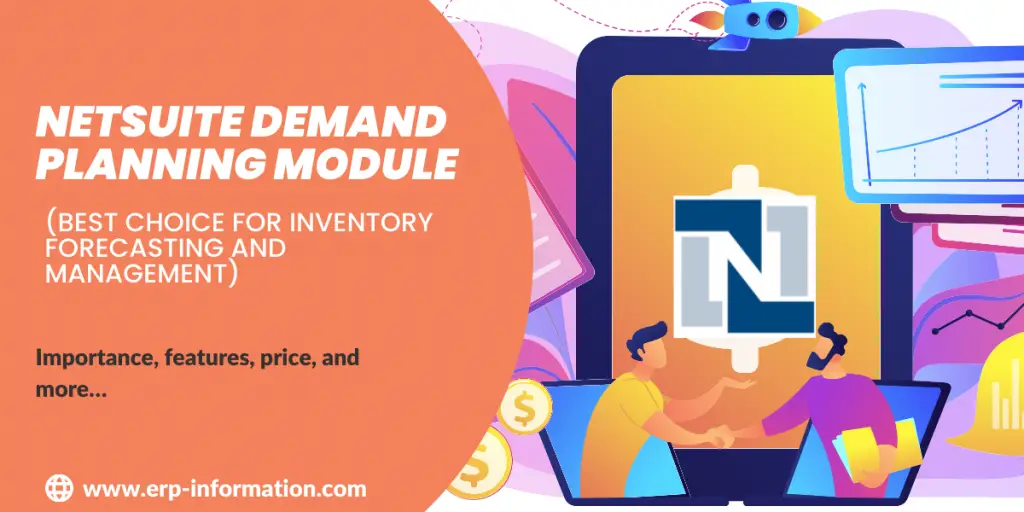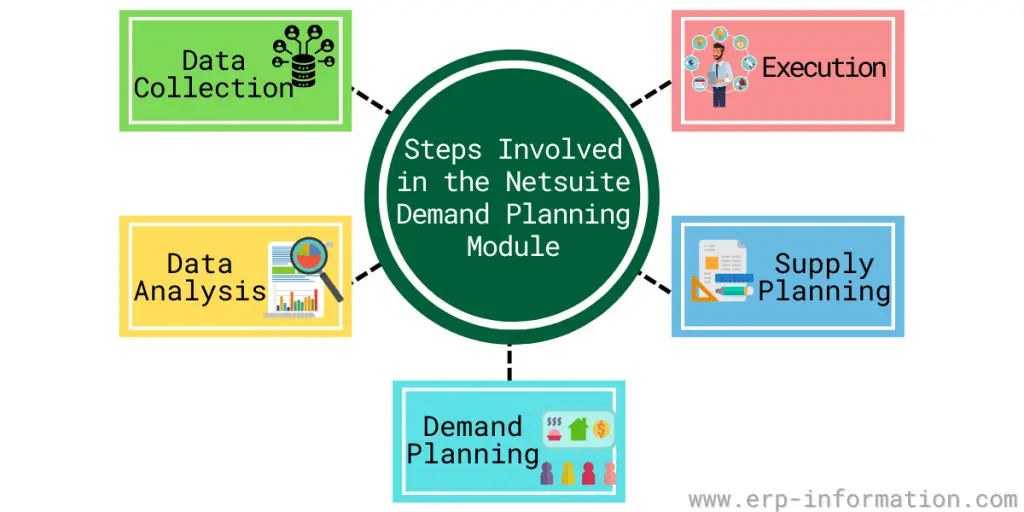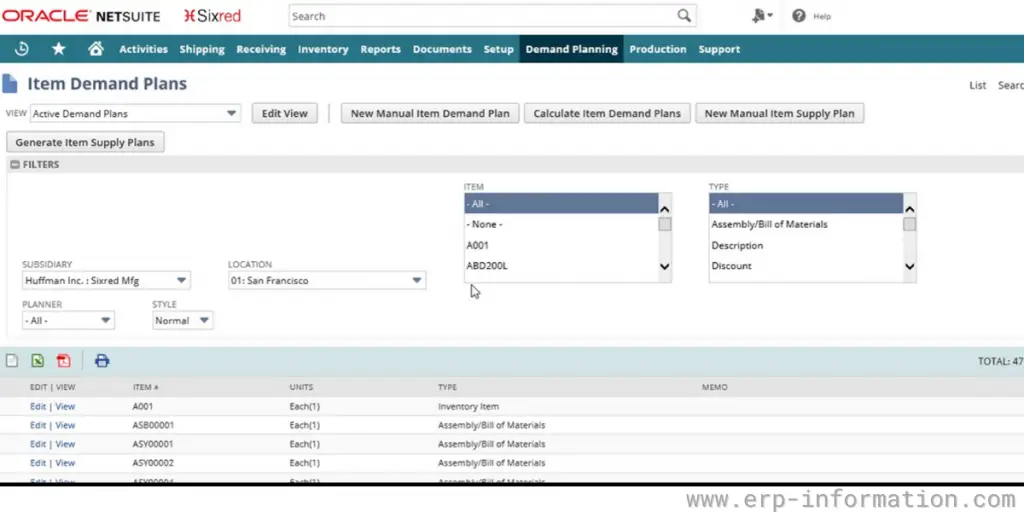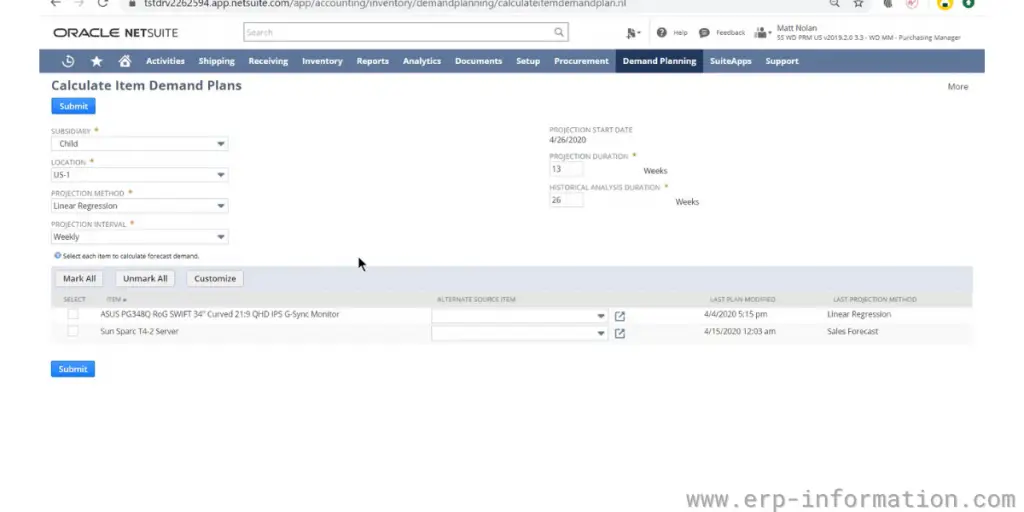Most companies rely on spreadsheets to do their demand planning, which is time-consuming and error-prone.
Getting an accurate picture of your current and future demand can be challenging without the right tools. Unfortunately, that can lead to missed opportunities and stockouts.
NetSuite demand planning module is a cloud-based solution that helps you accurately forecast demand and plan for future growth.
The demand planning module works with NetSuite to help you manage your inventory, sales, and production levels.
The article discloses the importance, features, pricing, process steps, and benefits of NetSuite demand planning.
What is the NetSuite Demand Planning Module?
NetSuite demand planning module is a cloud-based software application that enables businesses to forecast inventory needs and optimize stock levels to align with customer demand.
The module provides sophisticated tools for analyzing historical sales data, predicting future trends, and managing inventory across multiple locations.
In addition, the module integrates with NetSuite’s financial and order management modules to provide a complete picture of company operations. A demand planning module is essential for businesses that want to improve their forecasting accuracy and optimize their inventory levels.
Why is Demand Planning Important?
In today’s fast-paced business environment, understanding your company’s future inventory needs is more important than ever. With the right demand planning tools, businesses can avoid stockouts, maximize sales opportunities, and improve customer satisfaction.
In addition, it can help businesses reduce their overall inventory costs by ensuring that they only purchase the amount of inventory they need.
Process
The NetSuite demand planning module includes the following process steps:
Data collection
The first is to collect data on past sales, current inventory levels, and future customer demand. This data can be collected manually or imported from NetSuite’s financial and order management modules.
Data analysis
Once the data has been collected, it must be analyzed to identify trends and patterns. This analysis is used to generate forecasts of future demand.
Demand planning
The next step is to generate demand plans based on the data analysis. This step includes setting inventory targets and determining when and how much inventory should be purchased.
Supply planning
The next step is to generate supply plans. This step includes determining when and how much inventory should be produced in the supply chain.
Execution
The final step is executing the purchase, transfer, and work orders to implement the demand and supply plans.
Features
The NetSuite demand planning module includes the following features:
Forecasting
Facilitates the creation of product or family forecasts based on historical sales data.
4 Methods of Projection in Flexible Forecasting to Assess Your Stock Demand include,
- Linear regression: This method uses historical sales data to generate forecasts of future demand using the ordinary least-square regression method.
- Moving average: To determine the average stock level required, use the moving average of past demand. To forecast future stock levels, make use of that overall average.
- Seasonal average: Examine the seasonal trend of inventory flow using previous demand and then project a similar trend for future stock levels.
- Sales forecast: The Sales Forecast function uses forward-looking sales forecast data such as opportunities, predictions, and so on to project inventory demand.
Lot size
It enables you to create lot-size rules that define the quantity of inventory that should be ordered or produced based on customer demand.
Allocation management
Allocation management provides the ability to manage inventory levels across multiple channels. You can set inventory targets and reorder points for each channel.
Managing inventory levels across multiple locations
With real-time insight, you can easily define multiple inventory locations.
Item setup
It allows one to mention the criteria that impact every item, such as the item’s availability on demand, Setting up an alternative source for a new product with no sales history, an item’s distribution network or category Etc.
Replenishment planning
There are two ways to replenish goods: time-phased and reordered. It determines the optimal reorder points and quantities for stock items, taking into account lead times, safety stock levels, and other factors.
Sophisticated tools for analyzing data
The module includes various tools for analyzing data, such as the ability to filter data by date range, product, and location.
Integration with other NetSuite modules
The module integrates with NetSuite’s financial and order management modules to provide a complete picture of company operations.
Generating demand and supply plans
The module can generate demand and supply plans. In addition, you can personalize the plans to meet the company’s specific needs.
Pricing options
- The module offers a free trial to try before you buy it.
- Its module offers various pricing options, including subscription-based pricing and pay-as-you-go pricing.
- License fees for NetSuite are charged annually.
- In addition, there is a one-time installation fee.
- The components of a license are the Basic module, optional module, and user count (Based on the number of users).
- You can increase the number of modules and users according to your business growth.
| Platform supported | macOS, Windows, or Web browser |
| Deployment options | On-Premise, Cloud, or Private Cloud |
| Supported languages | English, French, Japanese, Polish, Portuguese, Russian, Spanish, Turkish, Ukrainian, Chinese (Simplified) |
Benefits
- It is vital for any business to optimize inventory levels, increase turnover, and reduce costs.
- NetSuite demand planning module enables you to modify your fulfillment expectations and quickly update maximum /minimum stocks, safety stock, lead time, and projections.
- It offers a comprehensive and centralized solution to help businesses manage their inventory more effectively.
- It enhances the accuracy of the forecast.
- Increases your company’s efficiency by minimizing production delays caused by a lack of materials.
- You can use planning rules and order pegging to execute orders properly.
Conclusion
In conclusion, the NetSuite Demand Planning module could be a good choice for businesses looking to boost their inventory forecasting and management.
It smoothly works with NetSuite’s financial and order management modules. Also free trial is available, so businesses can try it out and see if it fits their needs.
With strong features and functionality, this module can help your organization simplify operations and improve supply chain efficiency.
References



